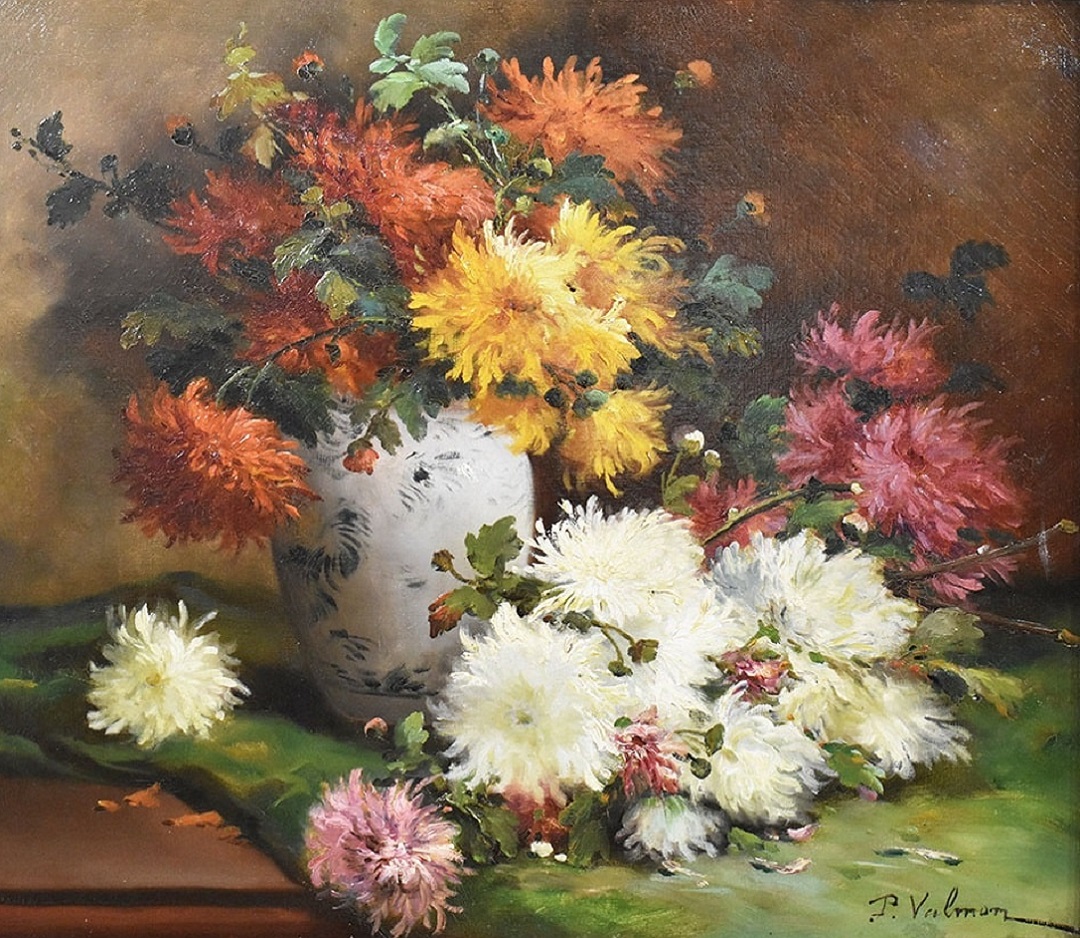Eugène Henri Cauchois

Eugène Henri Cauchois was a French painter known primarily for his floral paintings.
A promising view of youthful talent encouraged the young Eugène Henri Cauchois (1850-1911) to leave Rouen to study at the École des Beaux-Arts in Paris, becoming a pupil of Ferdinand Duboc and Alexandre Cabanel. Cauchois, as a pupil, assisted his master in the creation of large decorative panels for the most fashionable noble houses in Paris, as well as for the palace of Emperor Napoleon III, of which he was court painter, and for the residence of the empress Eugenie.
From Cabannel, Cauchois learned a sense of proportion. He excelled at painting large decorative canvases, usually depicting nature. Thus, still lifes became his specialty, painting fruit, vegetables, game and gardens, as well as clocks, vases and other objects, occasionally within a landscape.
The majority of his creations are floral arrangements, with roses, chrysanthemums, peonies, larks, hollyhocks and all sorts of wild flowers building up to a strong statement of fresh and vibrant colours.
The artist began exhibiting his works at the Salon Des Artistes Français in 1874. Many medals were received during his career: one in 1889, a bronze medal in 1900 and, finally, he received another recognition in 1904.
Today his work is highly regarded.
His paintings can be seen in collections around the world, including the museums of Louviers, Perpignan, Aux Halles and Rouen, as well as in the school of the VIIe arondissement of Paris, where the artist executed a series of paintings depicting floral compositions.




